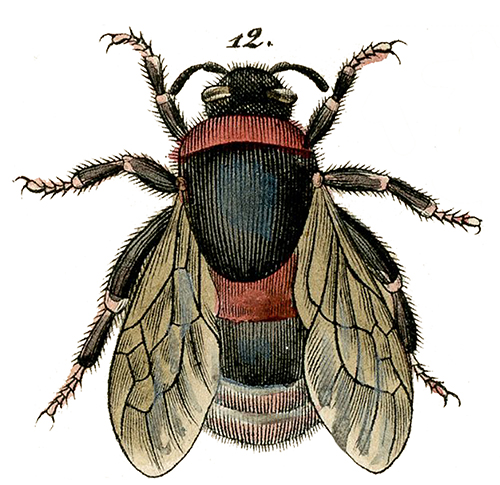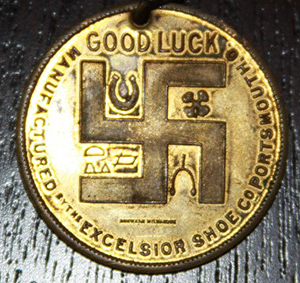
The slaves in Ganymede Quartet have a belief system that’s very important to them and this is introduced in A Proper Lover (GQ Book 2). Hetaeria, Latin for “fellowship,” is one of the names this belief system goes by. It is not a religion, per se, but a system of interdependency and symbolism. The slaves are raised up in the Houses understanding the importance of cooperation, of being supportive of one another, and of getting along. In many ways, their lives depend on it. In addition to their actual behavior, they demonstrate their support of one another and their friendships through the exchange of handmade talismans.
The slaves are a vulnerable population, and I felt they would have something specific to their subculture that would offer reassurance and support. I wanted the slaves to have something that mattered to them that they could do in tandem with a religious practice, if necessary, but that their masters wouldn’t take seriously. Henry does take it seriously, if only because it’s important to Martin; however, to his dismay, most of his friends dismiss the slave beliefs as childish nonsense and aren’t remotely interested in learning anything about them. Henry really is different!
In Hetaeria, symbols, colors and materials all have meaning, and the meanings are drawn from a variety of sources: all manner of religions, superstitions, folk medicine, astrology, fortune-telling. Really, the slaves take meaning from anything that seems like it has meaning. They’re adaptable in this as they are in everything, picking and choosing the useful bits of varied traditions. I wanted it to be an adaptable, fluid mishmash of influences and ideas. I have quite a few dictionaries and encyclopedias of esoterica, and these did come in handy, though I found just as much of what I wanted online.
In case it’s not evident from the text, some slave in the Briggs household is particularly skilled at painting, and the bee is beautifully done. The ability to create a beautiful talisman of some sort definitely adds to a slave’s status within his or her household. The bee has long been a symbol of industry, organization and intelligence, all of which are required of slaves, and all of which are qualities for anyone to be proud of.
APL trivia: The first draft of the scene where Martin shows Henry some of his talismans included a description of a protection stone decorated with a swastika. I was told that this had to go because Nazis, and I was pretty resistant to this, to say the least. I was under the impression that most people were well aware that the swastika was a very positive luck symbol for millenia until it was co-opted by the Nazis. Circa 1900, it would have been a very benign symbol. The beta reader who wanted me to get rid of it certainly did know this. But maybe most people don’t know? Well, now you do. And, obviously, I was talked out of including it, and I don’t think the scene suffers for the lack of it.
But, see? It really was just lucky during the Gilded Age. The other side of this coin has a Boy Scout on it!



Alas, unlike “queer,” swastikas haven’t been reappropriated by any of the groups who were harmed by it. Because it evokes “holocaust” to modern readers, I would only use it in a historical story if it was absolutely necessary to my plotline. Otherwise, it’s like casually using the word nigger in a historical story, simply because that word was originally used neutrally.
So I think you made the right decision.
I didn’t want to delete it, to be honest, and was quite surly about it at the time, though it took surprisingly little time to get over it, as is the case with most editing decisions. I tend to err on the side of finding things “interesting,” but if what’s interesting to me is going to upset readers in an unintended way, then obviously I don’t want to do it.
This guy, ManWoman, has been trying for years to reclaim the swastika. I met him an an art thing 20+ years ago and he was…intense :D But, obviously, 20 years later, he hasn’t made much progress.
I actually can’t/won’t type the N word, so I certainly have symbols/language that are upsetting to me. I do think it differs from swastika in that, so far as I know, it was never universally benign, but that’s not really the point. I don’t want to upset people for no good reason, and I don’t want people referring to my books as “that series with the swastika in it,” so I mostly listen to what my betas have to say :)
“I do think it differs from swastika in that, so far as I know, it was never universally benign”
The OUP traces it back to the sixteenth century and claims the word was originally neutral. I’m not sure when the change occurred.
That’s a case where the word has been reappropriated, but can only be used by the persecuted group. That’s often true of reappropriated words and images.
That’s a fascinating article on ManWoman. It does help that he has relatives who were in the Holocaust – he’s not a complete outsider.
P.S. As an example of a Nazi symbol that was reappropriated: the pink triangle.
Oh, definitely! (I have one of those around here somewhere…)
I’d agree it was the right thing to do. I do think a lot of people know of its original connotation, but I don’t know that it’s exactly common knowledge. Post WWII, no matter the situation or knowledge of the viewer/reader, it evokes such a visceral reaction, it’s likely best to avoid it altogether.
It was. I was ultimately convinced that it would be a distraction, and I definitely don’t want to distract people and knock them out of the world I’m trying to create. I think offering up my swastika factoid here instead is a good alternative to burdening Henry and Martin with the symbol’s 20th century history.
I’m definitely glad you chose not to include it–while I am aware of its history as a luck/beneficial symbol, it definitely would have pulled me out of the scene and disrupted the flow for me.
Yes, it was obviously the correct decision. I’m glad I have good beta readers to talk me out of doing ill-advised things :D